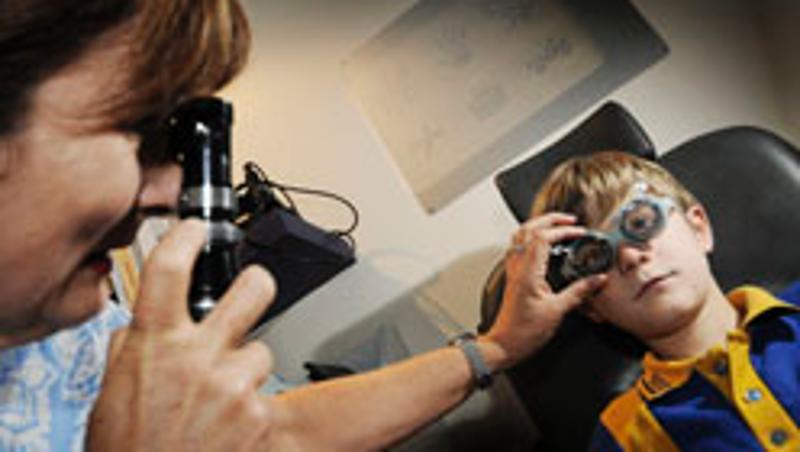
Wearing a patch to treat a lazy eye significantly lowers a child's fine motor skills and their perception of how well they are accepted by their peers, a new study by Queensland University of Technology has found.
Dr Ann Webber, from QUT's School of Optometry and the Institute of Health and Biomedical Innovation, has recently completed her PhD study looking at how amblyopia more commonly known as a lazy eye - affects a child's fine motor skills and self-esteem.
"Many children with amblyopia have poor depth perception in addition to poor vision in one eye. We were interested in how this may impact on skills important to children, particularly in their early education," Dr Webber said.
"Our finding that children with amblyopia do have poorer fine motor skills and lower perception of social acceptance means that, in addition to treating a child's eye condition, eye care practitioners may be able to advise parents of potential functional consequences.
"The study showed a lower social acceptance score in amblyopic children particularly in those children who had strabismus (eye-turn) and that a child's sense of acceptance by their peers may be negatively influenced by treatment that includes eye patching."
Dr Webber said about three in every 100 children were affected by a lazy eye, and, of those, about 35 per cent were likely to be victims of physical or verbal bullying.
"Our study indicates that, while wearing glasses does not contribute to reduced social acceptance in amblyopic children, treatment with an eye patch may," she said.
"This emphasises the importance of exploring alternative treatments with the hope that patching - with its potential negative psychosocial effects - may be minimised or avoided altogether."
She said the study also determined amblyopic children performed worse than control children on over half of the fine motor skills tasks evaluated.
"The deficits in motor performance were greatest on manual dexterity tasks requiring speed and accuracy. Awareness of the potential for reduced fine motor skills in children with strabismic amblyopia is important, so that clinicians can refer early for evaluation of these skills and early remediation if appropriate," Dr Webber said.
Dr Webber, who is also a practising optometrist, said clinicians were faced with the challenge of designing treatment regimens that were effective in restoring vision but with minimal psychosocial side-effects.
She said if children could be detected and treated by patching before they entered school or began to more formally socialise with their peer group, they may be less likely to feel self-conscious or ashamed about their patching. She said eye tests for amblyopia could be carried out on children before they start Prep.
"If we look at vision screening all children from three to four years of age we can hopefully treat those with amblyopia risk factors before they start school and minimise negative self-esteem consequences for children with a lazy eye."
Media contact - Sandra Hutchinson, QUT media officer, 07 3138 2999 or s3.hutchinson@qut.edu.au
** Dr Webber is available for interviews between 12.30pm and 3pm today. A photo is available for media use.




